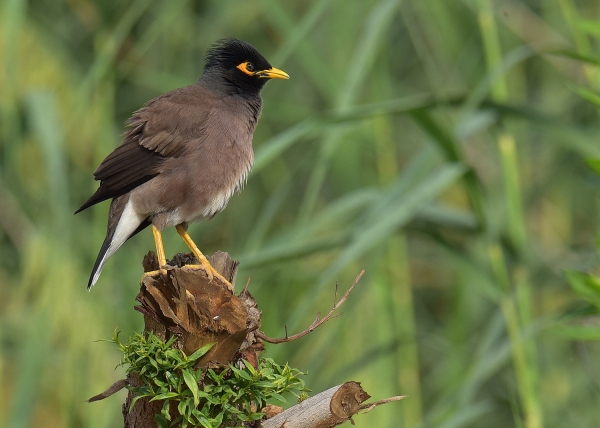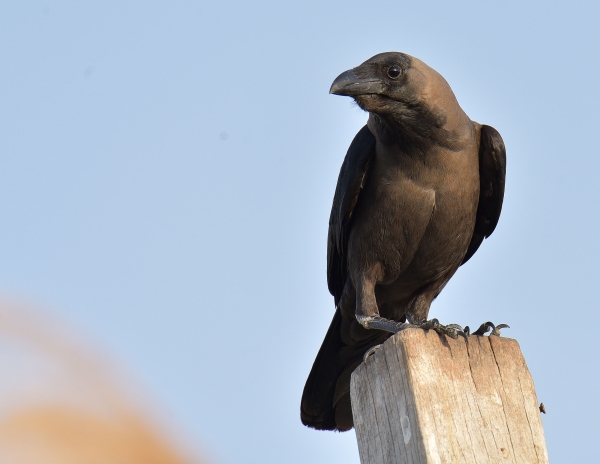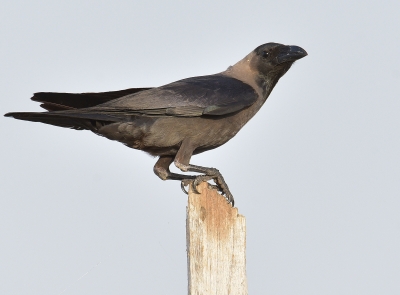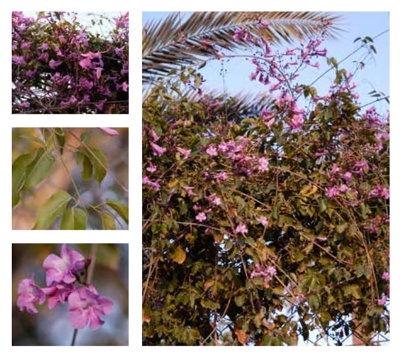


Invasive Non-Native Birds in the Kingdom of Saudi Arabia are globally classified as invasive components of the new ecosystems they have entered. These species pose a threat to biodiversity when they spread beyond their natural distribution range. A total of eleven bird species have been identified in Saudi Arabia through bird population monitoring and distribution tracking conducted by the National Center for Wildlife.
Assessment of invasive non-native birds in Saudi Arabia
The National Center for Wildlife has identified eleven species of invasive non-native birds in Saudi Arabia. Based on the criteria for assessing their impact, two species have been classified as having a severe environmental impact, six as moderate, and three as low. These species are the common myna (Acridotheres tristis), house crow (Corvus splendens), rose-ringed parakeet (Psittacula krameri), bank myna (Acridotheres ginginianus), red-vented bulbul (Pycnonotus cafer), grey francolin (Ortygornis pondicerianus), Alexandrine parakeet (Psittacula eupatria), scaly-breasted munia (Lonchura punctulata), streaked weaver (Ploceus manyar), red avadavat (Amandava amandava), and chestnut weaver (Ploceus rubiginosus).
The invasive non-native bird species in Saudi Arabia
The invasive non-native bird species in Saudi Arabia include two species classified as having a severe negative impact. The first is the common myna (Acridotheres tristis), which entered the Arabian Peninsula in the 1970s and was first recorded in Saudi Arabia in 1984. It has been observed in Riyadh, Jeddah, al-Madinah al-Munawwarah, and cities in the Eastern Province and is now present in most cities across the country. Its negative impact includes rapid spread, increasing population numbers, adaptability to different environments, predation on native birds, and difficulty in controlling its spread.
The second species is the house crow (Corvus splendens), introduced to the Middle East in the 1970s. It has spread across cities and ports along the Red Sea and Arabian Gulf coasts and the Farasan Islands. Its negative environmental effects include contributing to the spread of intestinal diseases caused by Salmonella bacteria, noise pollution, nesting on electricity poles, and harming young livestock.
The third species is the rose-ringed parakeet (Psittacula krameri), first discovered in Saudi Arabia in Dhahran in 1958. It is now found in cities and villages along the Red Sea and Arabian Gulf coasts, as well as in Tabuk and around Riyadh. The fourth species is the bank myna (Acridotheres ginginianus), introduced to the Arabian Peninsula as a pet bird, with its population increasing significantly in Dhahran, where it was recorded in 1984. The fifth species is the red-vented bulbul (Pycnonotus cafer), first recorded in Saudi Arabia in 1993 in Riyadh before spreading to Jeddah and the Eastern Province.
The sixth species is the grey francolin (Francolinus pondicerianus), first recorded in Saudi Arabia in Safwa in 1991. The seventh species is the Alexandrine parakeet (Psittacula eupatria), found in modified habitats in Jeddah and Dhahran, with its first recorded appearance in Dammam in 1983. The eighth species is the scaly-breasted munia (Lonchura punctulata), which typically forms large feral breeding populations and was first documented as an escapee in Dhahran in 1982 before being observed in Riyadh, Jeddah, and Taif. The ninth species is the streaked weaver (Ploceus manyar), recorded for the first time in 1989 in al-Qatif, Dhahran, and Riyadh. The tenth species is the red avadavat (Amandava amandava), first documented as a resident feral breeding species in Riyadh in 1975. The eleventh species is the chestnut weaver (Ploceus philippinus), introduced to Saudi Arabia as a pet bird and first observed near Riyadh in 1989.
The importance of wild birds in biodiversity
Wild birds are an essential part of biodiversity and serve as a vital indicator of ecosystem health due to their responsiveness to environmental changes. They perform functions that contribute to ecological balance, such as seed and pollen dispersal and the biological control of certain pests. The geographic location of Saudi Arabia, situated between East Asia, Europe, and Africa, places it along one of the world’s most significant bird migration routes. The country is home to 550 bird species, including 219 breeding species, 280 migratory species, and fifty-one vagrant species.
Related quizzes
Related articles

